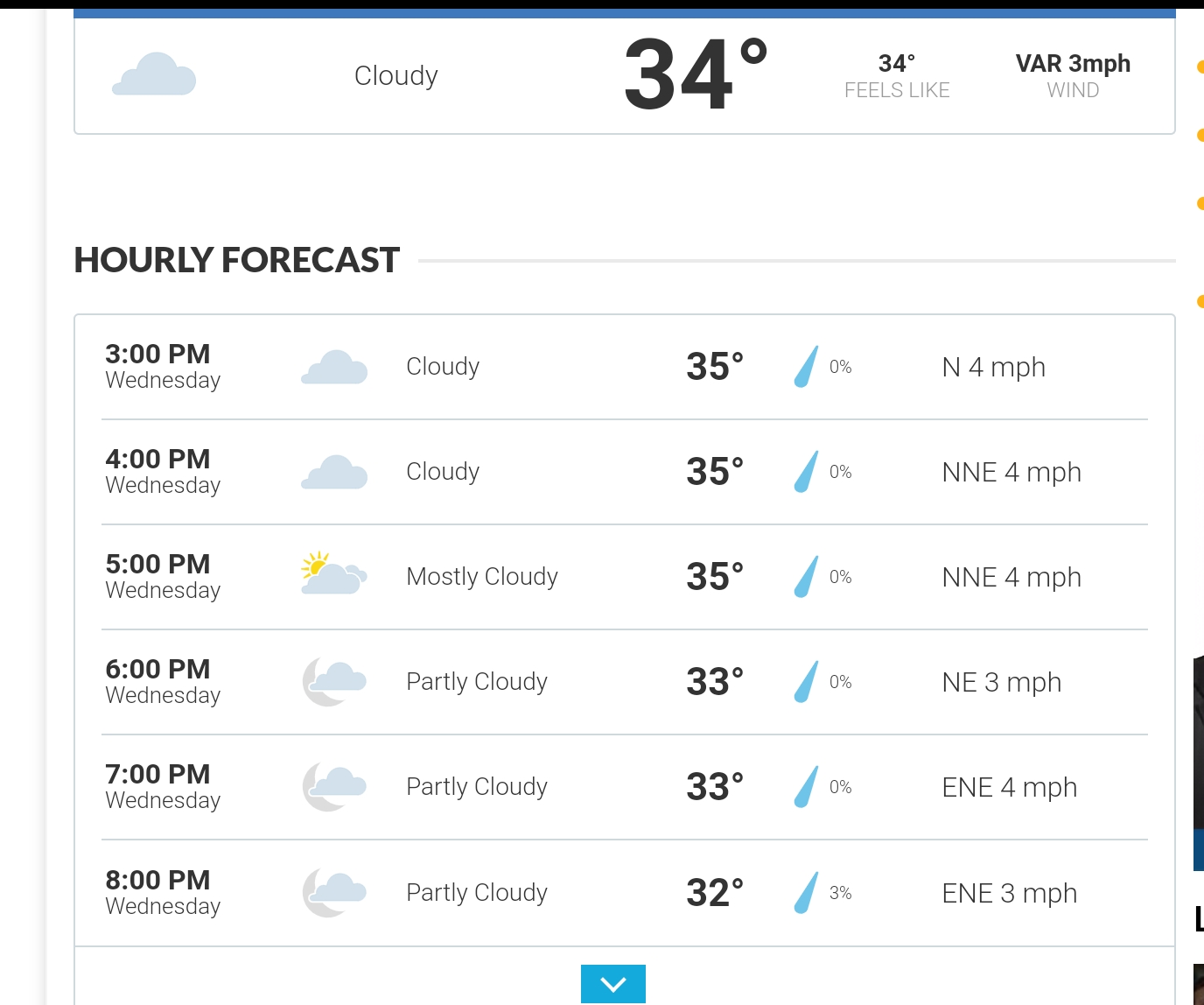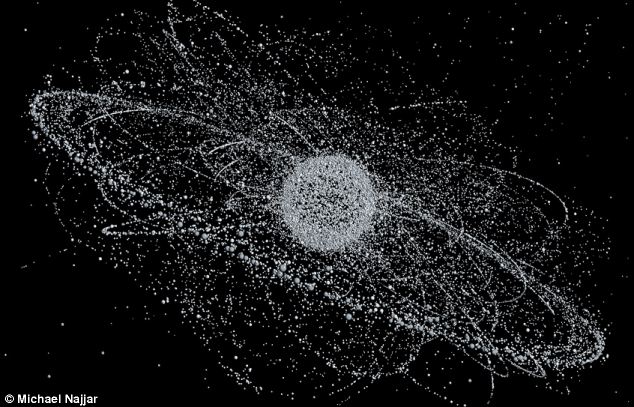It looks like you're using an Ad Blocker.
Please white-list or disable AboveTopSecret.com in your ad-blocking tool.
Thank you.
Some features of ATS will be disabled while you continue to use an ad-blocker.
share:
a reply to: samkent
OK thanks let me look into it further.
So I have seen 100's of satellites and that's the 1st one that I ever saw a flash and could see solar panels for a mere second or two. It was heading North and the sun rises in the East. It was around 4:30 AM on a Saturday morning in August outside of Columbia, SC.
I also have seen another satellite heading South from a NW direction. I will see a flash it it appears that the thing makes a 90 degree right angle turn such that it then is heading West over North Georgia over Lake Hartwell. Is it the flash that tricks my eyes and brain that I believe that I am seeing a 90 degree turn? I have observed the entire sequence which lasts 3 to 4 seconds.
OK thanks let me look into it further.
So I have seen 100's of satellites and that's the 1st one that I ever saw a flash and could see solar panels for a mere second or two. It was heading North and the sun rises in the East. It was around 4:30 AM on a Saturday morning in August outside of Columbia, SC.
I also have seen another satellite heading South from a NW direction. I will see a flash it it appears that the thing makes a 90 degree right angle turn such that it then is heading West over North Georgia over Lake Hartwell. Is it the flash that tricks my eyes and brain that I believe that I am seeing a 90 degree turn? I have observed the entire sequence which lasts 3 to 4 seconds.
a reply to: Waterglass
They have changed the odds from 1 in 100 to 1 in 20. Might be some fireworks after all.
They have changed the odds from 1 in 100 to 1 in 20. Might be some fireworks after all.
originally posted by: JIMC5499
a reply to: Waterglass
They have changed the odds from 1 in 100 to 1 in 20. Might be some fireworks after all.
Sure did..
www.livescience.com...
When this article was first written Tuesday morning (Jan. 28) the odds of a collision were 1 in 100. A crash has since become five times more likely, with 1 in 20 odds. If the two satellites were to collide, the debris could endanger spacecraft around the planet.
If the satellites miss as expected, it will be a near miss: LeoLabs, the satellite-tracking company that made the prediction, said they should pass about 40 feet apart (12 meters) at 6:39:35 p.m. local time. The odds of a collision went up in large part based on the information that one of the two satellites, the Gravity Gradient Stabilization Experiment (GGSE-4), had a 60 foot (18 m) boom trailing from it, according to LeoLabs. No one knows which way the boom is facing, which complicates the calculation.

I guess just look up and see.

edit on 29-1-2020 by Bigburgh because: (no reason given)
originally posted by: JIMC5499
a reply to: Bigburgh
That's where I'm leaving for now. The good news is that I'll be on the Parkway East coming IN from Monroeville. I'm out by the Alcoa Tech Center now.
Congratulations again..
Here's a pic at 6:26 pm... clouds😞

Baby faces are a guarantee... No joy on space.
edit on 29-1-2020 by Bigburgh because: D's and L's
Well just stepping back inside....
I saw nothing.
Granted it's cloudy with patches of open sky, but I saw nothing.
News is saying they passed by 150 feet 47 meters.
I saw nothing.
Granted it's cloudy with patches of open sky, but I saw nothing.
News is saying they passed by 150 feet 47 meters.
edit on 29-1-2020 by Bigburgh because: (no reason given)
***ON SALE NOW***
The I Survived T's..
$29.00 plus $49.00 shipping fees..

Order now while supplies last!
The black border is th the night sky I photographed.
The I Survived T's..
$29.00 plus $49.00 shipping fees..

Order now while supplies last!
The black border is th the night sky I photographed.

edit on 29-1-2020 by Bigburgh because: (no reason
given)
originally posted by: Arbitrageur
If they are predicted to miss by 15-30m, that's not a collision but that's a possibility, if not it will be a close call.
originally posted by: M4nWithNoN4me
If you have a cousin who could help us to understand the likelihood of this satellite collision, the factors that created the conditions for it to happen, the possible consequences of said collision, and any other intelligent and informed info, plz post it back here in a reply!
Have you seen this image before? It shows the 22,000 objects in orbit that can be tracked from the ground, looks pretty crowded up there so I am not surprised by these near misses.
We're surrounded by SPACE JUNK: Incredible image reveals the disused rockets and abandoned satellites that orbit Earth
Based on a data archive, each miniature sphere in this image represents an existing object orbiting in space. There are around 22,000 objects in orbit that are big enough for officials on the ground to track
In the early days of satellites, there was no provision to "de-orbit" them or crash them back into earth after their service life was over. I think many satellites now launched have such de-orbiting capabilities to either bring them down or put them into a graveyard orbit for dead satellites. But we still have a lot of junk from the past which is the case for at least one of the two satellites mentioned in the OP dating back to 1967.
There are maybe 370,000 objects in orbit, some too small to be tracked from the ground. The Chinese created a big mess when they tested an anti-satellite weapon on one of their satellites creating many fragments of debris which could damage other satellites if they hit them, and the international community complained about that orbit pollution.
Y'know, for some enterprising business person, this could prove to be a virtual gold mine in salvage...!!
"Including actual GOLD", as many satellites and other space junk are filled with the stuff..!!
That image represents Trillions of dollars worth of actual rubbish..!!
edit on 29-1-2020 by Ironclad1964 because: (no reason given)
Now that it's all safe and miraculously the sky is pristine with stars...
If you stumbled across this thread, you might have ask... what language were those poster members from Pittsburgh were saying...

Here in Pittsburgh we add syllables and letters that are of no comprehension to the English language.
Vacuums are sweepers..
Rubber bands are gumbands..
Trash is rubbish...
East liberty is now Sliberty..
Wash is warsh or worsh..
Down is Dahhn ...
House is hahhs..
Jaggoff is a jerk times 10..
Is doesn't end.
Boston locals sound more intelligent.
Imagine a person outside in minus 5° Fahrenheit weather with cotton stuffed in your mouth trying to speak..
This is how we speak.
So I introduce the Pittsburgh Dad.
Take notice of the worst headache in a can of beer.. Iron City Beer. Not pronounced iron but "eye ern unnnn"
Also those gawd awful thick shop prescription glasses. Multi functionality, safe and improve your life viewing experience.

m.youtube.com...
m.youtube.com...
m.youtube.com...
I should probably make a member thread on this...
EDIT: How dare I !! we say Pop not Soda. POP POP POP.
If you stumbled across this thread, you might have ask... what language were those poster members from Pittsburgh were saying...

Here in Pittsburgh we add syllables and letters that are of no comprehension to the English language.
Vacuums are sweepers..
Rubber bands are gumbands..
Trash is rubbish...
East liberty is now Sliberty..
Wash is warsh or worsh..
Down is Dahhn ...
House is hahhs..
Jaggoff is a jerk times 10..
Is doesn't end.
Boston locals sound more intelligent.
Imagine a person outside in minus 5° Fahrenheit weather with cotton stuffed in your mouth trying to speak..
This is how we speak.
So I introduce the Pittsburgh Dad.
Take notice of the worst headache in a can of beer.. Iron City Beer. Not pronounced iron but "eye ern unnnn"
Also those gawd awful thick shop prescription glasses. Multi functionality, safe and improve your life viewing experience.

m.youtube.com...
m.youtube.com...
m.youtube.com...
I should probably make a member thread on this...
EDIT: How dare I !! we say Pop not Soda. POP POP POP.
edit on 29-1-2020 by Bigburgh because: (no reason given)
originally posted by: Ironclad1964
Y'know, for some enterprising business person, this could prove to be a virtual gold mine in salvage...!!
"Including actual GOLD", as many satellites and other space junk are filled with the stuff..!!
That image represents Trillions of dollars worth of actual rubbish..!!
It's been tried.
www.imdb.com...
a reply to: Bigburgh
I joke with my brother that he's Pittsburgh Dad. Not only is there a passing resemblance, but he talks and acts just like him.
I haven't lived in Pittsburgh for 30 years, and I like to think I've lost most of my Pittsburgh accent, but if I just spend a few minutes talking to my family when I go back to visit, I revert to sounding like Pittsburgh Dad.
That is to say, you can take the Yinzer out of Pittsburgh, but you can't take the Yinzer out of the Yinzer.
On Topic:
By the way, even though I'm now almost 300 miles away, I could (according to heavens-above.com) still view the two satellites at the time of their potential collision. They would have been about 67 degrees up from the NWN horizon at the time, but would have been quite dim. The sky in my neighborhood is relatively dark, so I might have had a chance to see one or both, but unfortunately I couldn't be at home at the time, and where I was there was too much ambient light around me.
I joke with my brother that he's Pittsburgh Dad. Not only is there a passing resemblance, but he talks and acts just like him.
I haven't lived in Pittsburgh for 30 years, and I like to think I've lost most of my Pittsburgh accent, but if I just spend a few minutes talking to my family when I go back to visit, I revert to sounding like Pittsburgh Dad.
That is to say, you can take the Yinzer out of Pittsburgh, but you can't take the Yinzer out of the Yinzer.
On Topic:
By the way, even though I'm now almost 300 miles away, I could (according to heavens-above.com) still view the two satellites at the time of their potential collision. They would have been about 67 degrees up from the NWN horizon at the time, but would have been quite dim. The sky in my neighborhood is relatively dark, so I might have had a chance to see one or both, but unfortunately I couldn't be at home at the time, and where I was there was too much ambient light around me.
edit on 1/30/2020 by Soylent Green Is People because: (no reason given)
new topics
-
Top Sci Fi/Horror Crossover Movies
Movies: 2 hours ago -
Magic Vaporizing Ray Gun Claim - More Proof You Can't Believe Anything Hamas Says
War On Terrorism: 3 hours ago -
One out of every 20 Canadians Dies by Euthanasia
Medical Issues & Conspiracies: 3 hours ago -
USS Liberty - I had no idea. Candace Owen Interview
US Political Madness: 4 hours ago
top topics
-
USS Liberty - I had no idea. Candace Owen Interview
US Political Madness: 4 hours ago, 12 flags -
Magic Vaporizing Ray Gun Claim - More Proof You Can't Believe Anything Hamas Says
War On Terrorism: 3 hours ago, 6 flags -
Top Sci Fi/Horror Crossover Movies
Movies: 2 hours ago, 5 flags -
What Am I Hearing
General Chit Chat: 12 hours ago, 4 flags -
One out of every 20 Canadians Dies by Euthanasia
Medical Issues & Conspiracies: 3 hours ago, 4 flags
active topics
-
FBI Director CHRISTOPHER WRAY Will Resign Before President Trump Takes Office on 1.20.2025.
US Political Madness • 19 • : ADVISOR -
Magic Vaporizing Ray Gun Claim - More Proof You Can't Believe Anything Hamas Says
War On Terrorism • 4 • : network dude -
-@TH3WH17ERABB17- -Q- ---TIME TO SHOW THE WORLD--- -Part- --44--
Dissecting Disinformation • 3639 • : duncanagain -
One out of every 20 Canadians Dies by Euthanasia
Medical Issues & Conspiracies • 8 • : network dude -
Will all hell break out? Jersey drones - blue beam
Aliens and UFOs • 46 • : grey580 -
USS Liberty - I had no idea. Candace Owen Interview
US Political Madness • 10 • : AgarthaSeed -
Remember These Attacks When President Trump 2.0 Retribution-Justice Commences.
2024 Elections • 105 • : Oldcarpy2 -
Should be BANNED!
General Chit Chat • 17 • : TheSemiskepticII -
Instrumental Surf Music - Origins to the Present Day
Music • 248 • : underpass61 -
Post A Funny (T&C Friendly) Pic Part IV: The LOL awakens!
General Chit Chat • 7902 • : underpass61

